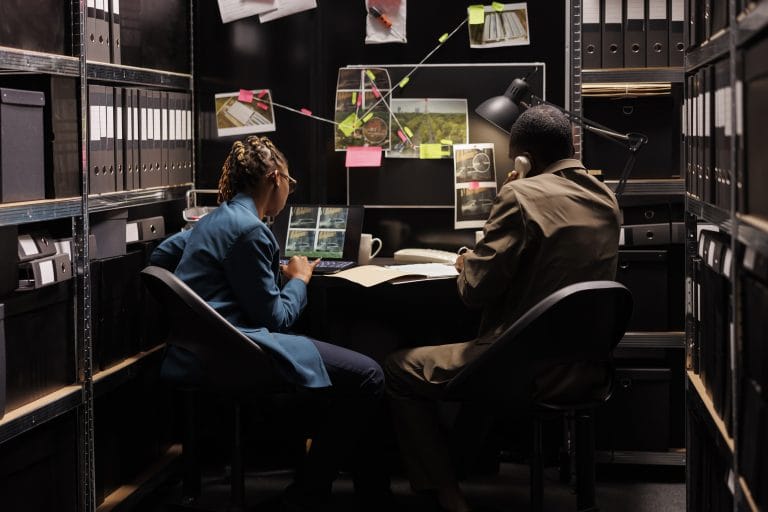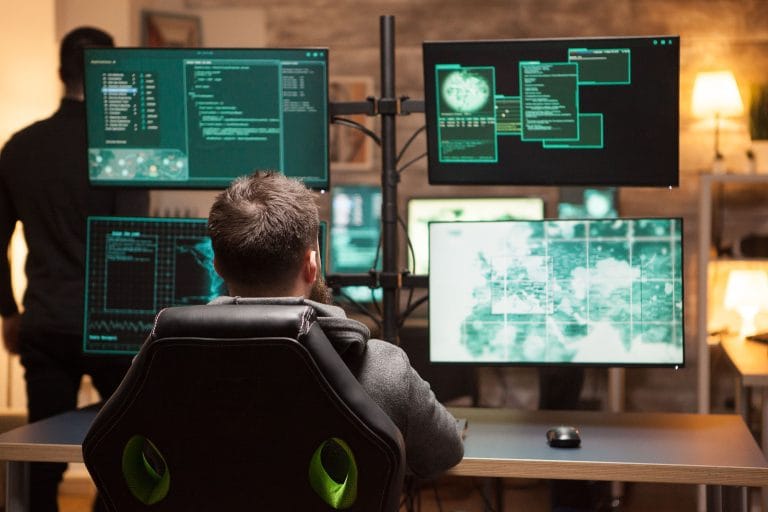By Steve Buller, Chief Forensic Analyst, Stutchman Forensic Lab LLC

In the world of criminal and civil investigations, uncovering hidden truths is often a challenging task. However, with the advancements in technology and training, forensic video experts are now able to shed light on mysteries that were once deemed unsolvable. In this article, we dive into the fascinating world of forensics and explore how video analysis is helping solve crimes like never before.
We will discuss the various techniques employed in forensic video analysis, including image enhancement, video stabilization, and facial recognition. We’ll also explore a real-life case study where the use of video enhancement and analysis played a crucial role in solving a criminal investigation.
Join us as we take a deep dive into the world of forensic video analysis and discover how hidden truths are brought to light through the examination of seemingly invisible clues.
The Importance of Forensic Video Analysis in Criminal and Civil Investigations
Video evidence has become increasingly prevalent in criminal and civil investigations. Surveillance cameras, body-worn cameras, and even mobile phones capture crucial moments that can help solve crimes and settle civil disputes. However, the quality of video footage can vary greatly, making it challenging to extract valuable information. This is where forensic video analysis steps in.

Forensic video analysis involves scientific examination, clarification, and interpretation of video evidence. It goes beyond simply watching a video and relies on specialized techniques to extract hidden details. By analyzing video footage frame by frame, forensic video experts can identify individuals, enhance images, and even determine the sequence of events. This process can provide critical video evidence in criminal and civil cases, revealing what actually happened.
Techniques Used in Forensic Video Analysis - Enhancing and Clarifying Video Footage

One of the primary techniques used by forensic video companies is image enhancement and clarification. This process involves adjusting various parameters, such as brightness, contrast, color balance, and focus, to improve the visibility of details within a video. By enhancing the image quality, forensic experts can bring out hidden information and make it easier to identify individuals, objects, or who’s at fault.
While image enhancement focuses on visual clarity, equally crucial is the need to address physical camera movement. Video stabilization serves as a complementary technique in forensic video analysis, reducing camera shake or motion blur that commonly occurs in footage from body-worn cameras (BWC) and cell phones.
By stabilizing the video, forensic video specialists can obtain a clearer and more stable image, making it easier to analyze and interpret. Slowing the stabilized video and preparing a series of still images is also helpful in presenting video evidence.
Forensic Video Analysis Software and Tools
To carry out these techniques effectively, forensic video experts rely on highly specialized software and tools. These tools offer a range of features designed specifically for forensic video analysis, allowing experts to enhance, clarify, and slow video footage. Some software even includes advanced algorithms for facial recognition, making it easier to highlight or redact individuals within a video.
Case Study Showcasing the Impact of Forensic Video Analysis
Case Study: Clarifying and Stabilizing Body-Worn Camera Footage To Uncover Critical Evidence

The Challenge: Determining the Presence and Direction of a Firearm
A criminal defense attorney looking for forensic video analysis in Southern California contacted Stutchman Forensic Lab with a critical question: Did their client, the suspect in a high-stakes criminal case, possess a firearm during an interaction with law enforcement, and was it pointed at the officer? The evidence in question was a video captured by the officer’s body-worn camera. However, the raw footage posed significant challenges:
- Shaky Recording: The BWC footage was unstable, making it difficult to focus on key details.
- High-Speed Action: The event unfolded in a matter of seconds, leaving no clear view of the suspect’s hand in real time.
- Unclear Visuals: Without clarification, the video offered little insight into the presence of a firearm.
The Solution: Forensic Video Clarification and Stabilization
Our forensic experts at Stutchman Forensic Lab applied advanced techniques to address these challenges:
- Stabilization: By reducing the motion of the BWC footage, the field of view was centered and steadied, allowing for better focus on the suspect’s actions.
- Clarification: Using industry-leading forensic software, the video was enhanced to bring out details obscured by low resolution and movement.
- Slow-Motion Analysis: The critical moments were slowed down frame-by-frame, giving a clear view of the suspect’s hand and any objects present.
- Still Images Video: Every still image from the critical video segment was extracted so you could advance frame-by-frame through the sequence.

The Outcome: Unveiling Critical Evidence
Once the video was clarified, stabilized, and slowed, the results were undeniable:
- The Suspect Had a Firearm: The enhanced video revealed that the suspect did have a gun in their hand, a detail obscured in the original recording.
- The Gun Was Pointed at the Officer: For a brief but critical moment, the firearm was directed toward the officer.
The defense attorney was taken aback by what the forensic video analysis uncovered. This pivotal evidence not only answered their original question but also prompted a complete redirection of the defense strategy.
Impact: Precision and Clarity in the Pursuit of Justice
This case study highlights the value of forensic video analysis in uncovering crucial evidence hidden within chaotic footage. Whether for defense attorneys, prosecutors, or investigators, the ability to stabilize and clarify video can mean the difference between uncertainty and clear understanding.

Challenges and Limitations in Forensic Video Analysis
While forensic video analysis has proven to be a powerful tool, it is not without its challenges and limitations. Poor lighting conditions, low-resolution cameras, low frame rate, and camera angles can all impact the effectiveness of forensic video analysis techniques.
Additionally, the interpretation of video evidence is subjective and can be influenced by various factors, including personal biases. It is crucial for forensic experts to maintain objectivity and rely on scientific methods to draw conclusions. Collaboration with other experts and cross-validation of findings can help minimize errors and ensure the accuracy of analysis.
The Future of Forensic Video Analysis
The future of forensic video analysis looks promising. Advancements in artificial intelligence and machine learning are expected to revolutionize the field, making video analysis faster and more accurate. Facial recognition algorithms are becoming increasingly sophisticated, allowing for real-time identification of individuals within a video stream.

Conclusion
Forensic video analysis has emerged as a crucial investigative tool, uncovering critical evidence through meticulous examination of subtle visual details. By employing techniques such as image enhancement, video stabilization, and synchronizing multiple camera views, and frame-by-frame analysis, forensic video experts can extract vital information from video footage that would otherwise remain hidden.
However, the field of forensic video analysis also faces challenges and limitations, including the quality of video footage and the subjective nature of interpretation. Ongoing training and reliable forensic video programs are crucial for professionals in this field to ensure competency and credibility. Looking ahead, advancements in technology, such as artificial intelligence and machine learning, hold great promise for the future of forensic video analysis.
Law enforcement and government agencies can now access real-time video enhancement and clarification services through specialized forensic labs.
If you need professional video analysis to uncover the truth in your case, contact Stutchman Forensic Lab today. Our forensic video experts are here to help ensure that no detail goes unnoticed.
